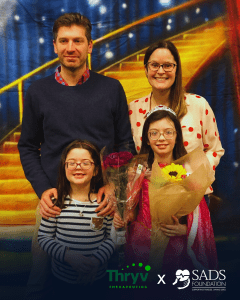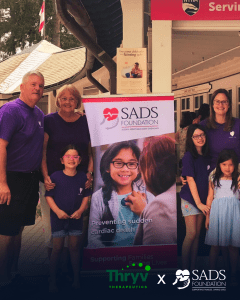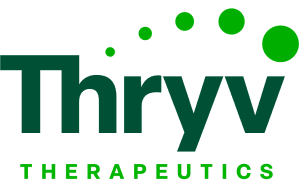 When Christie Tolosky died suddenly in 2005 at just 24 years old, her family and friends were in shock. She was a seemingly healthy and active young woman who loved everything about life, especially horses, and who was planning to go back to school for a masters degree to pursue human services or education.
When Christie Tolosky died suddenly in 2005 at just 24 years old, her family and friends were in shock. She was a seemingly healthy and active young woman who loved everything about life, especially horses, and who was planning to go back to school for a masters degree to pursue human services or education.
Christie didn’t get to fulfill her dream of helping people through a career, but she potentially saved the lives of dozens of people in her own family—by alerting them to the inherited arrhythmia condition known as Long QT Syndrome.
“After Christie passed unexpectedly, my brother and I were both given a full checkup, because the doctors didn’t know why Christie died, or if there was a genetic cause that could affect others in our family,” said her sister Melissa. “My initial ECG showed Long QT, and looking back at some symptoms Christie had shown, like fainting when her alarm clock went off, it became clear that she and I both had Long QT Syndrome.”
Christie’s mother, and several aunts and cousins were also diagnosed with Long QT Syndrome Type 2. Members of the family are treated with beta blockers and several, including Melissa, also have an implanted cardioverter defibrillator (ICD). Their brother, Nick, does not carry the gene.
“It all happened so fast,” says Melissa. “Chris died on a Monday, we held her funeral that Friday, then the following Monday I was at my doctor’s office for an ECG. I saw a cardiologist two days later and an electrophysiologist the next week.
“I was still struggling to continue my daily walks as I adjusted to the beta blocker when I found out I would be getting this thing I never heard of—an ICD—surgically implanted in just a few weeks. And my parents were navigating all of this with me as they were grappling with the sudden death of their other daughter.”
A New Diagnosis 
“I was still struggling to continue my daily walks as I adjusted to the beta blocker when I found out I would be getting this thing I never heard of—an ICD. And my parents were navigating all of this with me as they were grappling with the sudden death of their other daughter.”
Amidst the whirlwind, Melissa began to accumulate and ask questions about what it really means to have Long QT. In her young twenties at the time, she was particularly interested in what the diagnosis meant for her ability to have children in the future. She learned that her children would have a 50% chance of inheriting the condition.
Melissa tuned in particularly closely to presentations about pregnancy at the SADS Foundation’s family conferences she attended. “Hearing doctors share that someone with Long QT can absolutely have a safe pregnancy was the reassurance I needed,” she says. “On top of that, I was learning that even if my children inherit Long QT, they were not facing sudden death. My sister’s outcome did not have to be theirs.”
When she did become pregnant, Melissa worked with her care team to discuss her options and create a plan for her and the baby. “This was a great group of doctors and professionals, but I often felt like the most knowledgeable person in the room when it came to a Long QT pregnancy,” she says. “I was so grateful to be able to connect directly with specialists in the SADS Foundation network who helped inform my care team at home.”
Both of Melissa’s daughters – who are now 11 and 9 – have Long QT Syndrome Type 2 as well, and are also on beta blockers.
A Better Solution
“I lost my sister to Long QT, and I have two daughters with Long QT. I thought to myself: I can actually help usher in the future of treatment for this condition. I can make my daughters’ futures safer.”
While Melissa and her daughters – and their extended family – feel protected by the current treatments available for Long QT Syndrome, she hopes that the future will bring better, more targeted solutions for her family’s condition. One of her cousins has experienced an inappropriate shock from an ICD and Melissa lives under the constant fear that a potential complication could emerge related to her own device. She hopes for better, which is why she recently participated in a clinical trial for a new drug that could be a game-changer for Long QT Syndrome.
 “I lost my sister to Long QT, and I have two daughters with Long QT. I thought to myself: I can actually help usher in the future of treatment for this condition. I can make my daughters’ futures safer,” she says.
“I lost my sister to Long QT, and I have two daughters with Long QT. I thought to myself: I can actually help usher in the future of treatment for this condition. I can make my daughters’ futures safer,” she says.
The trial is a part of Thryv Therapeutics’ effort to help advance new, targeted treatments for Long QT Syndrome Types 2 and 3.
“Today, there are no regulatory approved treatments for people living with Long QT Syndrome,” says Amy Sehnert, MD, Chief Medical Officer at Thryv Therapeutics. “We are actively working to change that through our clinical programs. We have just opened enrollment in the myQTwave study which se
Melissa shared her experience, including tips for packing, mental preparation and what to expect from an inpatient clinical trial, at the SADS International Family Conference in November 2024.
“Not everyone can make it work, and not everyone will be comfortable with the risks,” she says. “It’s a personal decision. Personally, I feel proud to be one of the first ten people with Long QT to have tested a medication that could be a game-changer for us.”
As she and her family wait for better, more targeted treatments, they’re currently still taking beta blockers and managing their ICDs. Melissa received her latest replacement in January and her mom is due in a couple of years. They’re hopeful that no additional members of the family will need an ICD beyond those already treated with one.
While LQTS is part of their lives now – and will be in the future – they look forward to treatments that could address the root of the issue, and not just the symptoms.
Thank you to Thryv Therapeutics for sponsoring Long QT Syndrome Awareness Week. Learn more about Thryv Therapeutics, and their work on new treatments for Long QT Syndrome, here.

